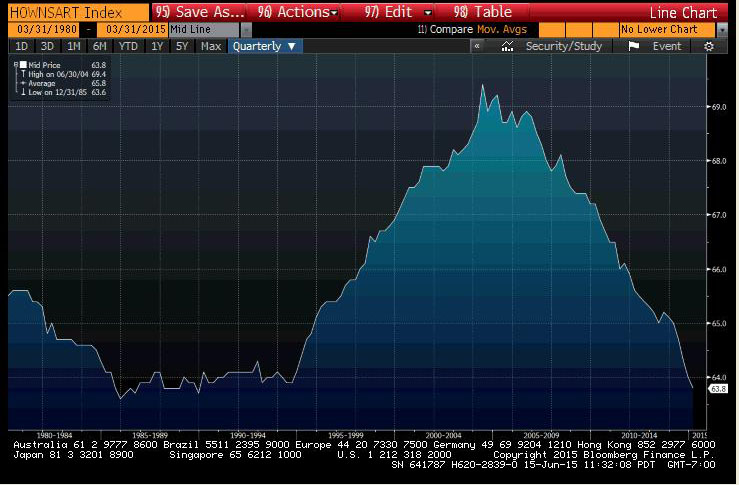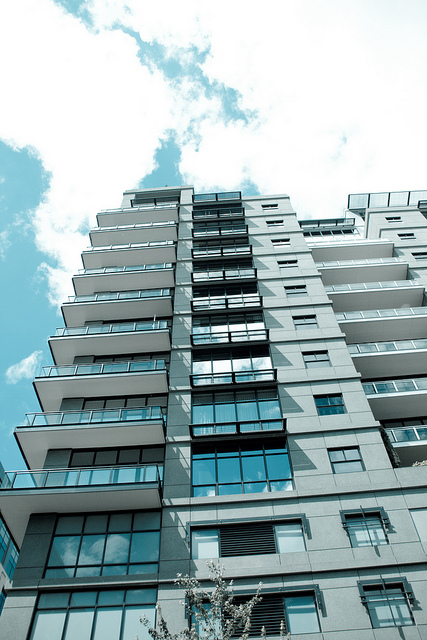 BY BRAD HOULE | CFA
BY BRAD HOULE | CFA
While most categories of commercial real estate have performed well, one of the most robust has been apartment buildings.
BY BRAD HOULE | CFA
While most categories of commercial real estate have performed well, one of the most robust has been apartment buildings
Photo courtesy: Flickr – Razvan Orendovici |
Demand for commercial real estate from investors has been robust for the past few years. In a world of low interest rates, the relative yield advantage of owning commercial real estate is attractive to investors. In addition, trophy commercial properties in gateway cities like New York and San Francisco are seen as a “store-of-value” to foreign investors. When international investors are faced with a volatile home currency or an unstable government, the thought of owning a landmark building in an American city is a relatively prudent investment. As a result, real estate transactions in coastal cities have occurred at price levels that imply a very meager return for the buyer.
While most categories of commercial real estate have performed well, one of the most robust has been apartment buildings. Home prices have rebounded sharply since the Great Recession, particularly in the “cool” cities that millennials prefer to call home. One would think that the millennial generation is the demographic driving new household formation and should be in their prime first-time home buying years. However, a cultural shift has taken place whereby millennials are waiting longer to get married, start families and often prefer to rent.
According to the U.S. Census Bureau, home ownership as a percentage of households has declined nationally from nearly 70 percent in 2004 and 2005 to 63.8 percent in 2015. A one-percent point change in home ownership rates equates to 1.3 million households, according to Bloomberg data. Lending requirements for first-time home building have been tightened dramatically since the financial crisis and the 20-percent down payment requirement disqualifies many millennial prospective homebuyers.
Home Ownership as a Percentage of Total Households

Source: Bloomberg
According to Bloomberg, apartment construction nationally has been rising since 2009. Apartment construction permits, a leading indicator of multifamily construction, was at an all-time high of 557,000 units in May. Permits last approached this level in June 2008.
Hot in the City Portland multifamily trends have followed the other coastal cities. The Portland Housing Bureau reported that multifamily permits increased from 2,619 units in 2013 to an all-time high of 4,236 units in 2014. Vacancy rates are currently at 2.7 percent in Portland, which is below the national average of 4.1 percent. The Zillow Rent Index for Portland was up 7.2 percent from January of 2014 to January of 2015, which is above the national average of 3.3 percent. The number of cranes on both sides of the river in Portland’s central city is evidence that the trend remains in force.
Nationally, apartment construction is anticipated to peak in 2015 as rising interest rates potentially curtail new construction. Portland may have a longer runway of continued growth due to underdevelopment of multifamily housing prior to the real estate crisis, an influx of people to Portland and the current lack of supply. Broadly speaking, real estate development moves in cycles. Here in Portland, whether it’s the unsold Portland condos following the 2009 financial crisis or fewer food cart pods, we have seen firsthand that whatever the hot trend in Portland is, it has the potential to … cool down.
- Brad Houle, CFA, is executive vice president of fixed income research at Ferguson Wellman Capital Management. Ferguson Wellman is a guest blogger on the financial markets for Oregon Business.


